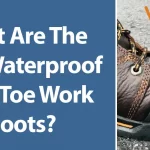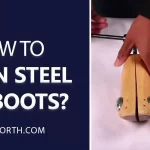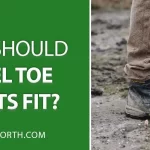For decades, construction workers have relied on nothing but steel-toe boots. They’re tough, comfy, and great for preventing injuries from dropped things or heavy machinery. Wearing protective footwear like steel-toed boots can make a person feel more at ease. The question now is, can steel-toe boots cause foot problems? It’s as easy as saying “Yes.”
Steel-toed boots provide a high level of protection, but they may be uncomfortable for some people’s feet. Arthritis of the foot may develop if the toes cannot move freely. Let’s delve a little deeper into this topic and discuss how contact between metal and skin can, as well as other types of heel pain, result in painful conditions such as plantar fasciitis.
Can Steel Toe Boots Cause Foot Problems: Here’s The Answar
Before discusiing about the steel toe boots foot problems let’s have a look at the the reasons that why steel toe boots leads to foot issues?
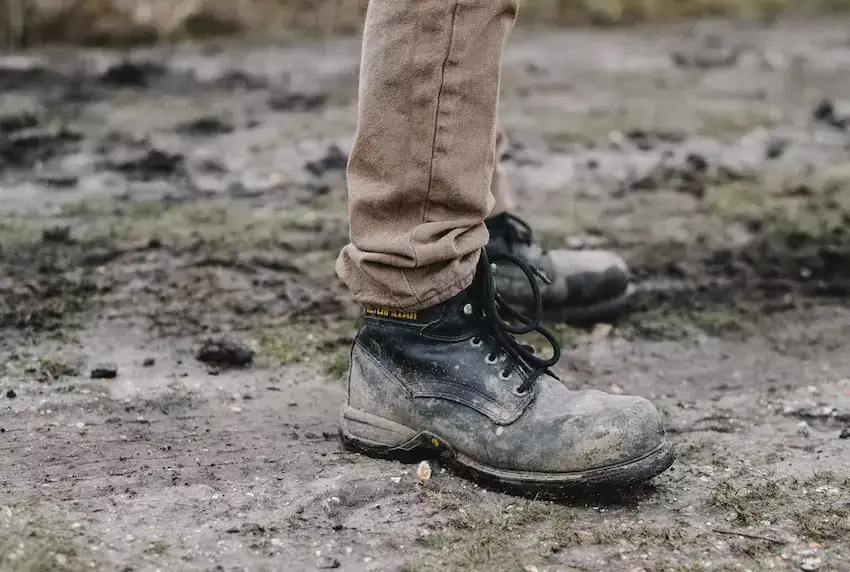
How Do Steel-Toed Boots lead to Foot Issues?
Steel toe shoes are notorious for being uncomfortable due to their rigid construction, which can irritate the toes, arch, and other parts of the foot. Pain in these areas originates from a lack of flexibility, which causes severe pain in the respective regions of your foot. As the foot bears the brunt of repeated, mild strain, the effects will spread throughout the body.
It doesn’t matter if we admit it, but when the foot is under too much pressure, the ankle takes on extra weight to alleviate the discomfort. The pain may start in the feet and move to the knees and calves before moving to the back.
In Toes
Steel toe caps restrict toe movement, gradually increasing the strain on the foot and ankle. Remove your footwear and squeeze your toes together, focusing on your big toe to eliminate this. Muscles in your foot and upper ankle will respond slightly to this.
It may not hurt for a minute or an hour, but over several days or weeks, it can cause serious issues in your muscles and tendons. In extreme cases, the toe’s skeletal structure must alter so that the toe cap fits properly.
In Arch
Some people have problems walking in steel-toe boots because the arch is too rigid. Some people, like linemen and loggers, benefit from having a strong arch supported by a steel shank, while others find it extremely uncomfortable.
Altering this may necessitate purchasing a new pair of boots or investing in footbeds that distribute pressure more evenly across the sole.
In Heel
When wearing steel-toe boots, it’s common to have to adjust your gait and posture because the heel is higher than the ball of your foot. It causes shifts in the tension placed on the muscles and tendons located around your ankles and feet, which can sometimes lead to injuries such as sprains and strains.
In addition to the effects of heel height on gait, the size of the designated heel resting area can also play a role. Like squished toes, heels hurt less at first when shoes are too small, but the extra pressure eventually leads to complications.
Why Do Steel-Toed Boots lead to Foot Issues?
Steel-toe boots are the most high-maintenance type of footwear. Foot problems can be brought on by the smallest of issues. Let’s dive deep into the why of these foot issues and discuss some potential solutions.
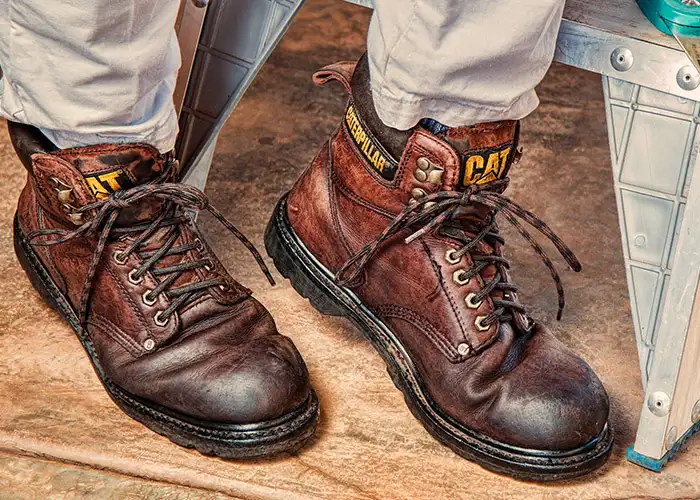
Poor Quality
Some Steel Toe Boots are made from defective materials because they must meet the price. It’s a combination of factors that leads to foot pain. Steel toe caps must be protected by high-quality leather.
The sturdy sole of a pair of steel-toe boots helps to protect the foot from the steel-toe cap above. If it’s compromised, it can put undue stress on the foot and even the ankle bone. The boot wears out rapidly, exposing the sharp steel toe cap.
Sizing Issues
Another common mistake when shopping for steel-toe boots is buying the incorrect size. Steel-toed boots are heavier and more compact than regular boots, so they may not be comfortable for people with wider feet. The rule of thumb is to go for a size and a half bigger than you normally would.
When steel-toe boots are too big, the toes can rub against the cap and cause pain. Blisters almost always result from this. Similarly, shoes or boots that are too small can cause blisters and other foot discomforts from the added pressure.
Unsupported Arch
Small pieces of the necessary equipment are often left out of steel-toe boots. The addition of arch support is something that often gets overlooked by manufacturers. To wear boots without discomfort, they should have a foundation in the center of the bottom.
Steel toe boots are uncomfortable to wear for extended periods because they do not provide arch support and are of unusually heavy and bulky construction. The result can be foot and ankle stiffness. Over time, this causes the kind of monotonous stress that affects the majority of modern workers.
Can Steel Toe Boots Cause Plantar Fasciitis?
Yes. Plantar fasciitis can be a common condition that causes pain in the heel from standing or walking with steel-toe boots for long periods. Steel-toe boot wearers who stand for long periods are at risk of a repetitive stress injuries in their feet. If your safety shoes don’t adequately support the arches of your feet, you could end up with plantar fasciitis.
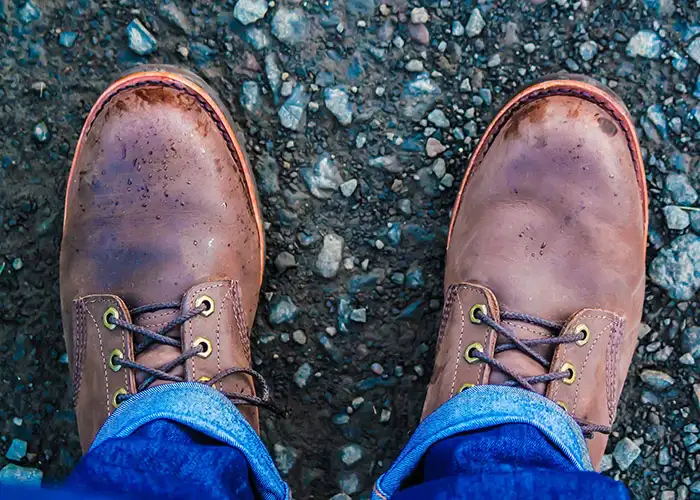
Can Plantar Fasciitis Be Prevented?
A thorough history and physical examination is the preventative measure against plantar fasciitis. The doctor can determine whether or not any additional conditions need to be treated after determining the primary diagnosis. However, if there is no underlying medical cause for plantar fasciitis, one can take steps to lessen the likelihood of developing the condition. Some advice is as follows:
- Wear breathable, comfortable work boots
- Relieve Stress on Your Feet
- Invest in a Comfortable Pair of Work Boots if You Plan on Standing All Day
- Putting on the Right Socks
- Wearing insoles or orthotics may help.
- Shed the Pounds
- Icing
- Self-Massage
- Foot flexing and stretching
Other Issues Faced By Using Steel Toe Work Boots
Bunions
Steel-toed shoes, while helpful, can cause issues like bunions if worn regularly. If your feet are particularly wide, you may experience discomfort in boots with a narrow toe box. A bunion develops inside the big toe bone and causes excruciating pain.
Blisters
Over time, your bunions will get worse if you don’t do anything about your too-small steel-toed boots, and you’ll be in a lot of pain because of the irritation.
Blisters are extremely common and can become much worse if you ignore them. Blisters on the foot can form if the toes rub excessively and repeatedly against the steel walls of the shoe, which can happen if the shoe is too tight. Blisters form when tiny tears in the skin’s dermis are caused by repeated rubbing.
Corn
Corn condition will appear when the skin on the top of the foot or the space between the toes becomes thick and hard. This issue typically occurs on the feet of people who wear safety boots that are too tight or loose.
Calluses
If you have calluses, you will notice thickened skin at the bottoms of your toes. Wearing a steel toe boot that is too small can cause calluses on the bottoms of your feet, particularly on the skin between your toes.
Toe Pointed Crossover
Another foot issue that may arise from wearing work shoes with a narrow or rigid steel toe box is crossover toe. The condition known as crossover toe occurs when the toe area of steel boots is too cramped for the feet.
Hammertoe
If your work shoes are too short or tight, you may experience this issue. Wearing short and tight steel-toe work boots can irritate the top of the foot and cause the toes to bend, flaring the joint and rubbing towards the work boot’s steel plate, which can cause a hammertoe.
The pain caused by hammertoes is severe, especially if the condition is not treated.
Metatarsalgia
Metatarsalgia can develop if you wear steel-toed boots to work and are constantly on the move. Inflammation of the metatarsal bones causes a foot injury known as Metatarsalgia, which is not considered particularly serious but can be extremely bothersome due to the pain it may cause.
Sprains of the Ankle
Twisting your ankle during a bad fall can cause a sprained ankle, and the injury could be made much worse if you wear ill-fitting work shoes. It is a common foot issue among industrial workers who are mandated to wear steel-toed work boots as a piece of their protective equipment.
A Solution to Steel Toe Boots Foot Problems
Steel-toe boots may cause discomfort in the toes, feet, and legs of anyone who wears them, especially if they do not fit properly. If your job requires you to be on your feet for long periods of the day, you may not always be able to avoid foot pain.
The good news is that serious complications from common foot problems are almost always avoidable with proper care. But if you’re looking for a permanent fix, you should get a new pair of protective shoes that fits properly, has a relaxed instep area, and has sufficient room inside the toe area.
If the steel toe plates in your work boots are causing discomfort, you should look into safety shoes with a soft toe, like composite toe work boots. Research shows that these boots are more comfortable than steel-toed ones.
Conclusion
As we wrap up our discussion of whether or not steel-toed boots can cause foot problems, it’s worth noting that the primary purpose of these safety shoes is to prevent injuries to the toes.
Unfortunately, several foot issues can arise from a poorly fitting steel toe boot. Suppose you immediately take proper care of the feet and address any issues as soon as they arise. In that case, you won’t have to worry about the most common foot problems, which are considered relatively minor.
But if you’re looking for a permanent fix, steel-toed boots custom-fitting to your feet are your best bet.
